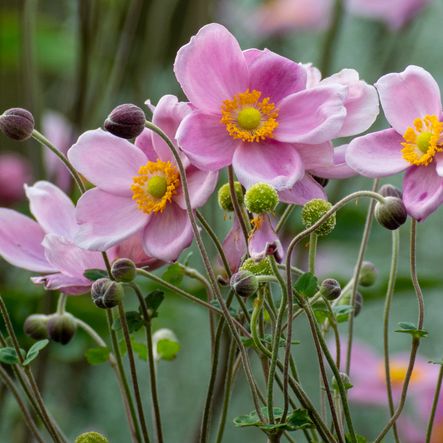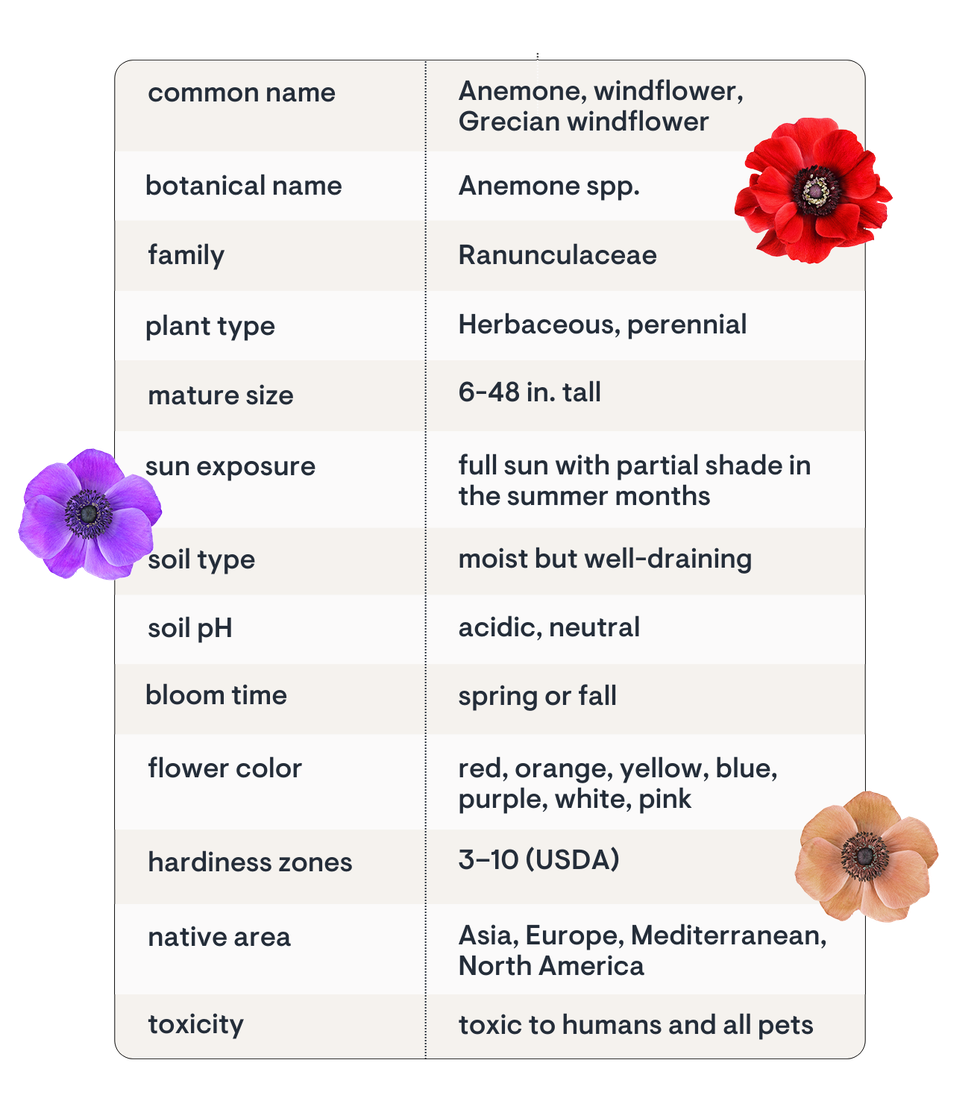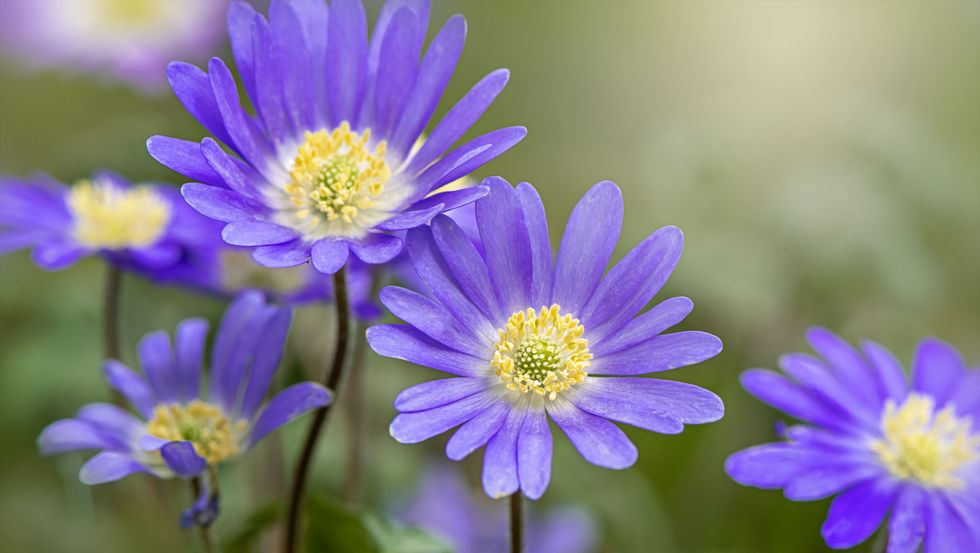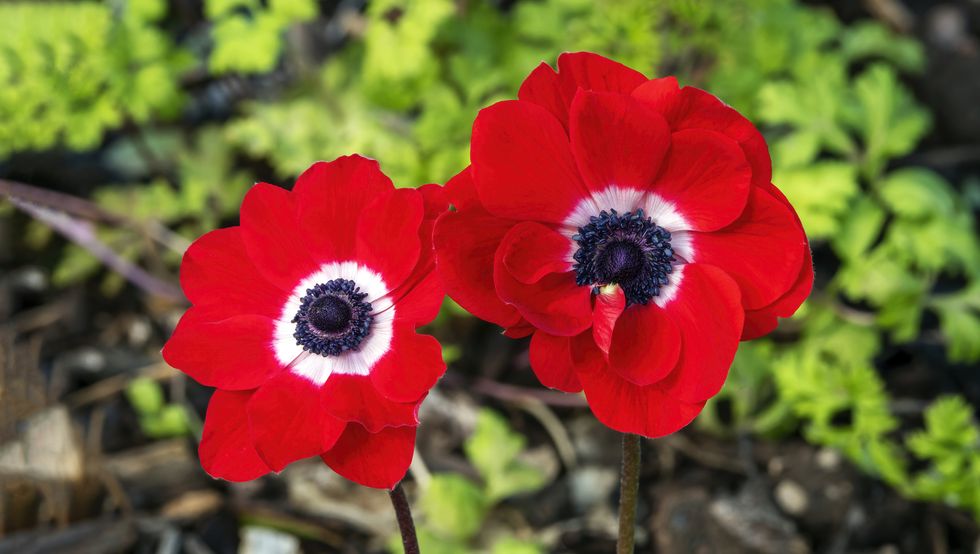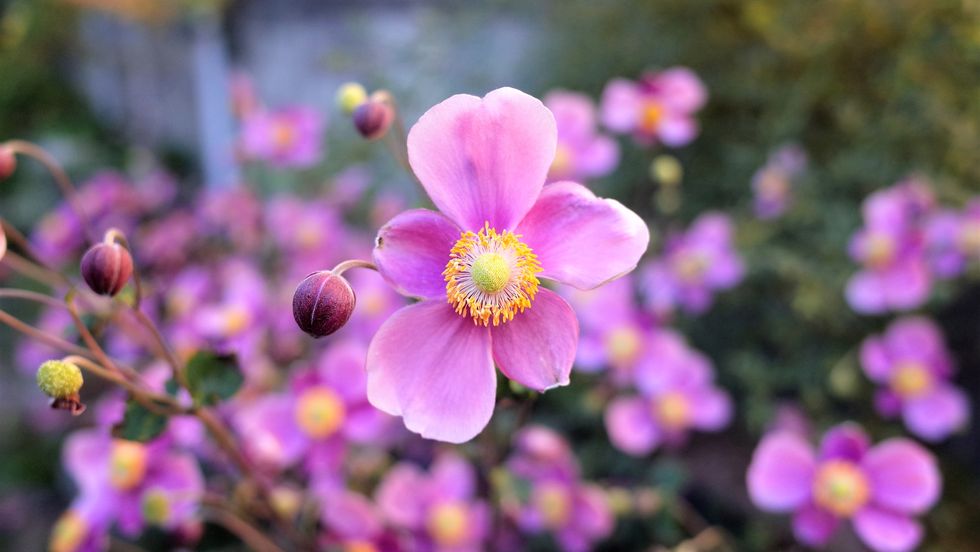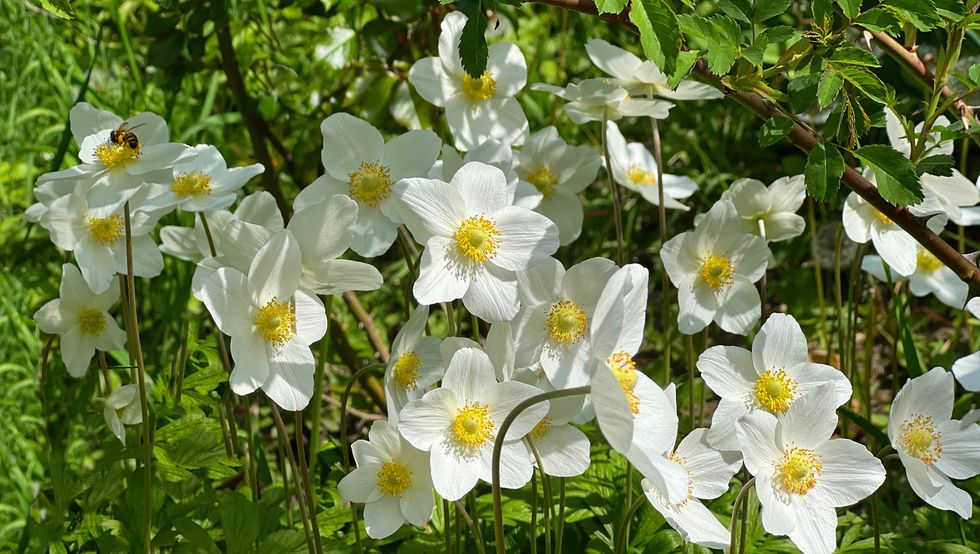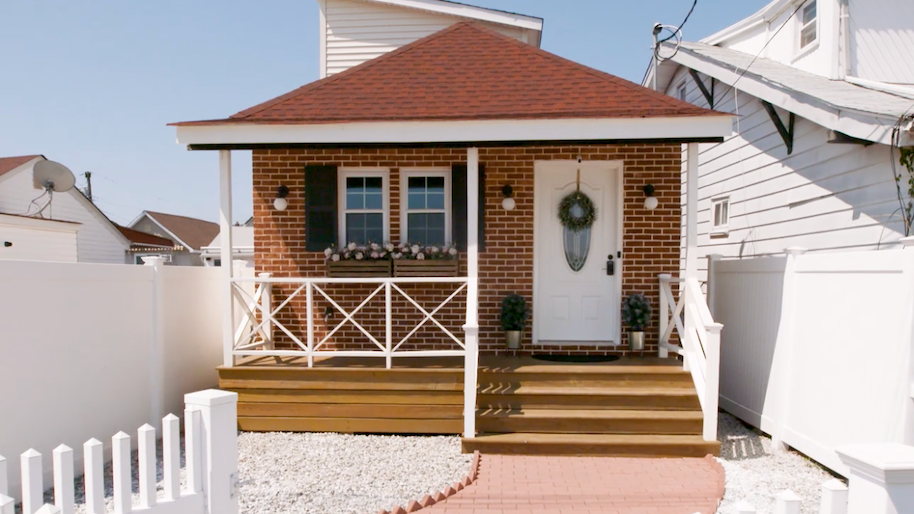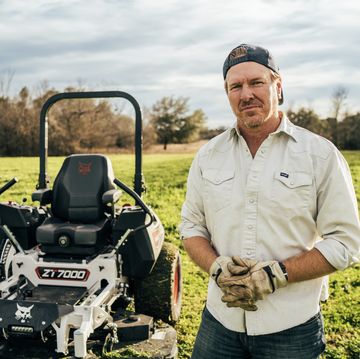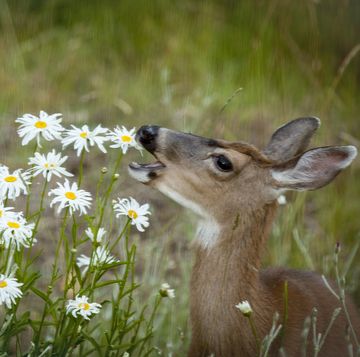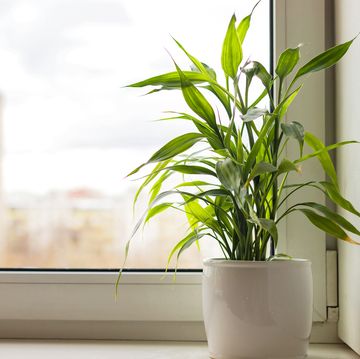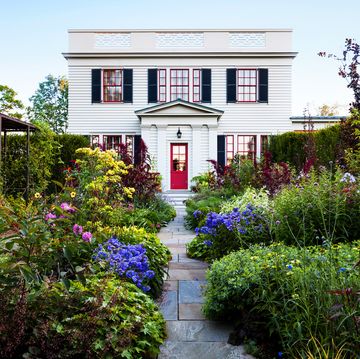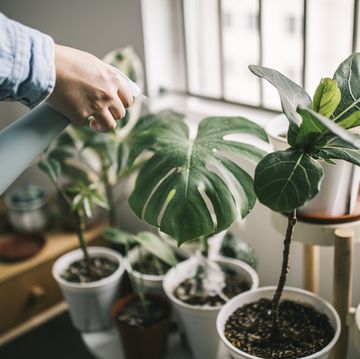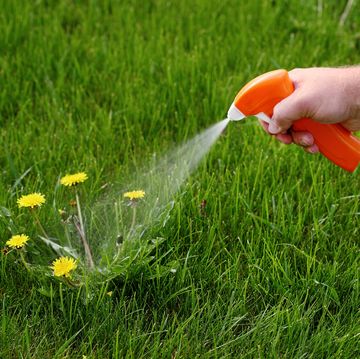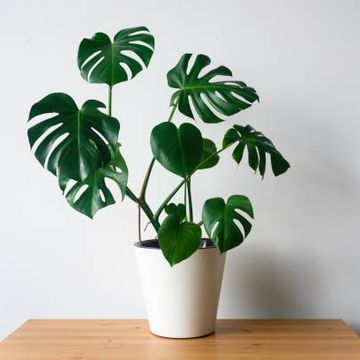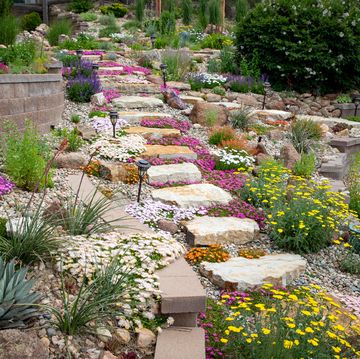There are few perennial blooms as striking as anemones. With vibrant centers and colorful petals, these plants can add both height and color to any landscaping design. There are even certain varieties that do best in pots and flower boxes if you're short on space. These low-maintenance blooms require ample sun and regular watering, but other than that they're pretty hands-off. However, there are still some care tips to make note of if you're planning on adding these flowers to your to-grow list for the upcoming season. Read on for the best care tips for anemone flowers.
How to Care for Anemone Flowers
- Plant in well-draining but moist soil that isn't in an area prone to flooding or standing water.
- Provide four to six hours of bright sunlight throughout the day and partial shade in the hotter, summer months.
- During the hotter months at the end of the growing season, water weekly with a sprinkler or hose. Throughout the rest of the season, normal rainfall is ample enough.
Sunlight
Anemones need at least four to six hours of direct or bright sunlight during the day. Certain varieties prefer a shadier spot, but four hours of bright sun is still the minimum, no matter what type you purchase.
Soil
Like any outdoor plant, you'll want to plant anemones in well-draining soil that isn't prone to flooding or pooling when it rains. The recommended soil pH for anemones is somewhere between neutral and acidic.
Water
During the peak of summer, when rainfall is at a minimum, you'll want to water your flowers once a week, focusing the spray of water on the soil. The rest of the year, regular rainfall is water aplenty for these flowers.
Temperature and Humidity
Cooler (but not cold) temperatures are best for anemones. You'll notice that spring bloomers will start to die out when the summer heat reaches its peak, and the same for the fall bloomers but once the nights start to freeze over in the winter.
When to Plant Anemone Flowers
There are two types of anemones, spring bloomers and fall bloomers. Be sure to check which ones you want before purchasing. To achieve peak growth, you'll want to plant in the opposite season of the blooming cycle. So for spring bloomers, plant in the fall months pre-frost. For fall bloomers, plant at the beginning of spring, just after the ground thaws.
Types of Anemones
Anemone blanda
This is a hardy anemone type that's great for beginners as it adapts well to most outdoor environments.
Anemone coronaria
The black centers of these poppy-like flowers make them stand out from the rest of the variations. They are a popular choice for floral arrangements thanks to their contrasting colors.
Anemone hupehensis var. japonica
Japanese anemone thrive best in a moist environment with partial shade.
Anemone sylvestris
This plant is an early spring bloomer that is shorter than other varieties, so place it at the front of your landscaping for it to be seen.
Pruning Anemones
While pruning isn't necessary for anemone care or overwintering, it can help keep the aesthetic of your garden looking neat after the growing season is over. You'll want to cut back as much as you can (but leave little stalks) to clean up dead growth during the winter.
Propagating Anemones
Propagating anemones isn't done like your typical houseplant care, but it is possible to promote new growth by digging up the tubers, dividing them, and then replanting. If you're propagating to store your anemone roots over the winter season, store them in a cool and dry place and only replant once you're sure the frost is done.
- Dig up the tubers or individual root clusters.
- Divide them in half with a clean, sanitized knife or scissors.
- Replant the separated root clusters as normal and proceed with regular care.
Potting and Repotting Anemones
If you would prefer to plant your anemone flowers in flower boxes, planters, or elsewhere (not in the ground), use a large pot filled with potting soil and compost. (If you're interested in making your own compost, we recommend trying one of these HB-approved composters.)
Note that potted anemones need a winter chill period, so you'll need to make sure to store them in an unheated greenhouse or another area where they can be overwintered.
How to Get Anemones to Bloom
Anemones are fast-growing plants. You'll usually see flowers within the first season of planting (spring or fall).
Provide Enough Water and Space
When anemones stop blooming, it is usually because the roots have become overcrowded or the plant needs more water. You'll want to lift and divide the root clumps and then replant and water them thoroughly to promote more blooms.
Length of Bloom Time
Flowers will last for approximately a month, and when cut the blooms can persist for up to two weeks in a vase with water. The lifespan of anemone flowers largely depends on the species. Some last only a season, while others can survive for nearly a decade.
Common Pests and Problems With Anemones
Foliar Nematode
Anemone flowers are fairly low-maintenance blooms, but they can be faced with foliar nematodes: microscopic worms that live in and on plant leaves, according to the Wisconsin Horticulture Extension. Damage from foliar nematodes is usually cosmetic and non-lethal, but they do tend to make plants less attractive.
Snails or Slugs
If you spot holes in your anemones leaves, you likely have a snail or slug problem. But don't panic. You can purchase bait to lure the culprits away from your precious blooms.
Drooping Flowers
This issue is more common with taller anemones or flowers that are not receiving enough sunlight. Stakes can be an easy solution to keep your flowers upright.
Plants Die Out Over Winter
Your flowers can die after experiencing a shock from an uncommonly cold winter with very low freezes, or a hard refreeze after a period of warm weather. Unfortunately, the only fix is to purchase new flowers and replant completely. If you live in a colder climate, a potential solution is to dig up the roots and store them in a dry, cool place until you can replant in the spring.
FAQ
Are anemone flowers annuals?
You can grow anemones as annuals if your climate and region are mild in climate all year round. You'll want to look for a species of anemone that is not cold-hardy, like the A. coronaria or A. blanda.
Should you plant anemones in pots or in the ground?
Where an anemone plant will thrive depends on the variety and species that you get. Most do best when planted in ground soil. However, the A. coronaria is one of the few that can thrive in a planting pot. However, they don't do well indoors due to a lack of sunlight, so no matter what container they're in, place them outdoors.
How long do anemone flowers last?
In the ground, an anemone's bloom length is approximately a month. When cut, the blooms can live for nearly two weeks in a vase with water.
